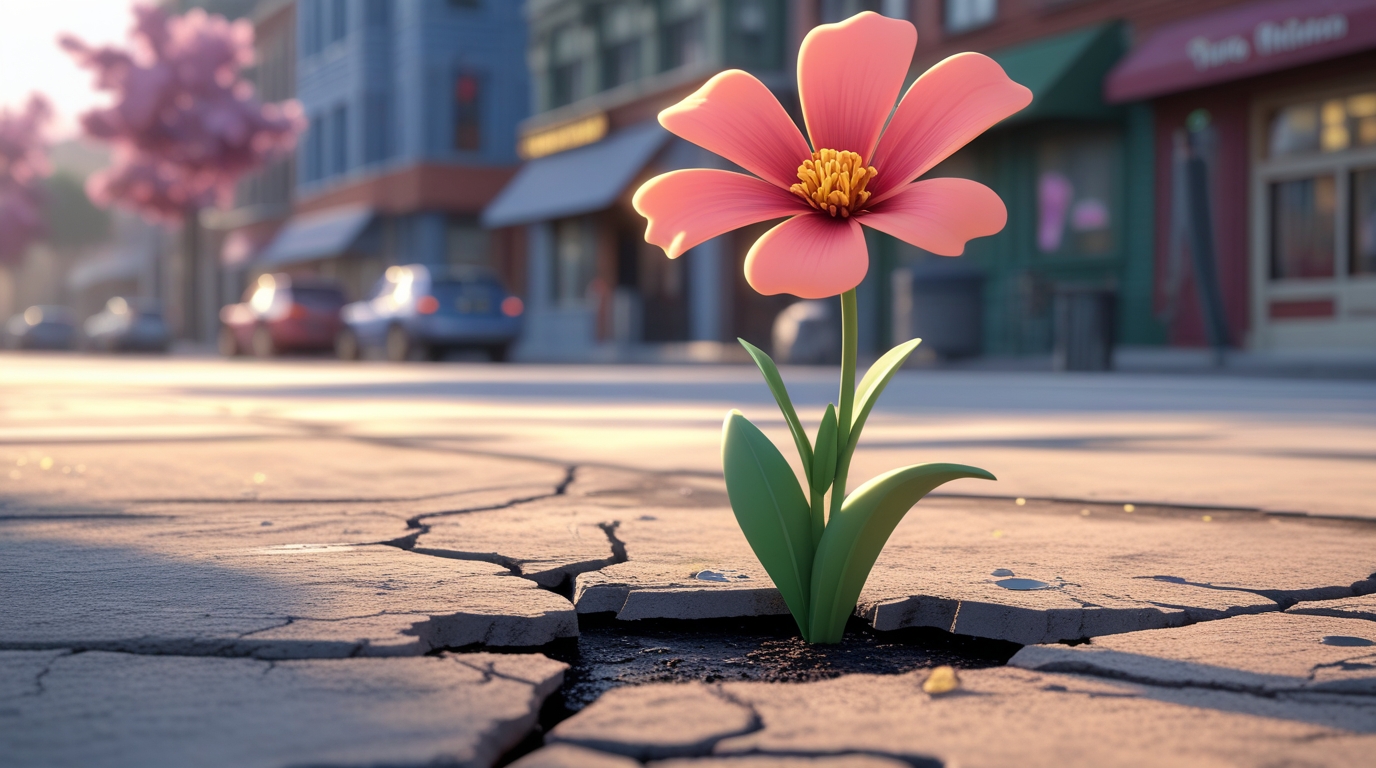Trees are nothing short of nature’s engineers. Their deep-rooted systems hold them steady in storms, allowing even the smallest saplings to grow back after the fiercest of tempests. It’s like seeing a life lesson in resilience right outside your window. Next time you’re feeling knocked about by life’s challenges, remember how these giants stand tall despite adversity.
Wildflowers, on the other hand, are tenacious little masters of survival. Imagine flowers blooming against barren landscapes, turning deserts into stunning tapestries of color. These petite powerhouses teach us that even the harshest environments can’t stop beauty from emerging. They remind us that we can blossom amid difficulty and constraints.
Nature’s cyclical renewal offers another powerful lesson. Consider how burnt forests slowly regenerate, breathing life into what seemed irreparably damaged. The seasons bring life full circle, showing us there’s always room for new beginnings. When life throws curveballs, it might be time to hit the reset button, adapt, and grow, just like nature does.
Look towards the toughest inhabitants of the wild, from the mountainous goats scaling steep cliffs to the mighty salmons swimming upstream. These creatures show us that a bit of grit and determination can go a long way. By embracing their sheer willpower, we can learn to tackle our own hurdles head-on, coming out stronger on the other side.

Embracing Imperfection: Lessons in Beauty
Nature’s imperfections are what make it truly captivating. Consider a leaf with its unique patterns and blemishes, or the jagged beauty of mountain ranges shaped over millennia. These natural quirks are reminders that perfection isn’t necessary for beauty, and sometimes, it’s the imperfect that resonates most with our sense of wonder.
Take inspiration from nature’s design. Patterns in a butterfly’s wings might be asymmetrical but are nonetheless stunning. The creative world often mirrors these nuances, finding genius in irregularity. Next time you face an imperfect situation or project, channel that creativity and see what unique beauty you can unveil.
Butterflies are prime examples of nature’s transformative beauty. Their remarkable journey from unremarkable caterpillars to winged wonders embodies change and growth. It’s a reminder to embrace our personal metamorphoses, accepting imperfections as necessary steps on the path to becoming something wonderful.
There’s something deeply soothing about the concept of ‘Wabi-Sabi,’ the Japanese art of finding beauty in imperfection and impermanence. Applying this mindset to our own lives encourages us to appreciate the flawed and the authentic. Next time you scrutinize minor faults, whether in yourself or something you’re working on, remember to embrace and even cherish them.

Discovering Harmony through Ecosystem Interconnection
Nature thrives on connections. The balance between predator and prey is a delicate dance that sustains ecosystems. While it might seem harsh, this natural order demonstrates the importance of roles and boundaries in maintaining balance. In our lives, defining roles within relationships can help achieve a harmonious existence.
Mutualism in nature is another inspiring lesson in cooperation. Think about bees and flowers, an age-old partnership that benefits both parties. This cooperation is a fundamental principle for thriving communities, reminding us that working together leads to mutual success. Applying this to our daily interactions can foster a spirit of collaboration and shared goals.
Nature’s symbiotic relationships sustain whole ecosystems. Consider how coral reefs provide shelter for marine life, or how forests form a microcosm of interdependent species. These relationships highlight the value of support and interdependence, encouraging us to think about how our actions affect others around us.
We can learn from nature’s synchronized systems, where balance is key. Whether it’s the ebb and flow of tides or the steady rhythm of seasons, these patterns show the importance of equilibrium. By applying these natural principles to our social and personal lives, we can strive for a state of cooperative growth and coexistence.

Serenity in Nature’s Simple Wonders
Nature has an amazing way of calming the mind. There’s a unique peace found in green forests and quiet meadows that’s hard to replicate. This tranquility works wonders for mental well-being, offering a respite from the rush of daily life. Taking mindful walks or spending quiet moments outdoors can substantially reduce stress and foster a sense of calm.
Open landscapes are awe-inspiring with their vastness and striking beauty. They often spark creativity and introspection, providing a perfect backdrop for thinking through life’s complexities. Whether it’s the endless horizon or a starlit night sky, these scenes can invoke a desire to connect deeper with ourselves and the world.
Finding stillness in a constantly moving world is rare, yet nature offers just that. The simplicity and regularity of natural settings show us the value of slowing down. By embracing this stillness, we allow ourselves a moment to breathe, recharge, and reconnect with what truly matters.
Connecting with nature is a straightforward yet profound way to reconnect with ourselves. This bond serves as a reminder of our roots and the beauty in simplicity. Regular interactions with nature, whether through hiking, gardening, or simply observing, can help ground us and restore a sense of balance.

Our Role in Preserving Nature’s Legacy
Every element of nature is intertwined, making biodiversity preservation crucial. Protecting varied species not only helps maintain ecosystems but also ensures that the intricate web of life remains intact. Our actions today determine the natural world that future generations will inherit.
Neglecting our planet comes with dire consequences. Climate change and pollution have a severe impact on natural landscapes and habitats. This neglect not only threatens species extinction but also disrupts crucial ecological processes that we rely on. Recognizing these effects prompts us to take more responsible actions for environmental caretaking.
Sustainable practices are essential in halting environmental decline. Simple changes like reducing waste, conserving water, and choosing eco-friendly products can make a significant difference in lessening our ecological footprint. Supporting businesses and initiatives that prioritize sustainability is another way to contribute to a greener planet.
Small acts can collectively lead to significant changes in environmental health. Engaging in community clean-up events, planting trees, or supporting local conservation projects contribute to preserving nature’s beauty. These efforts not only benefit the environment but also foster a sense of community and shared responsibility for the land we call home.


